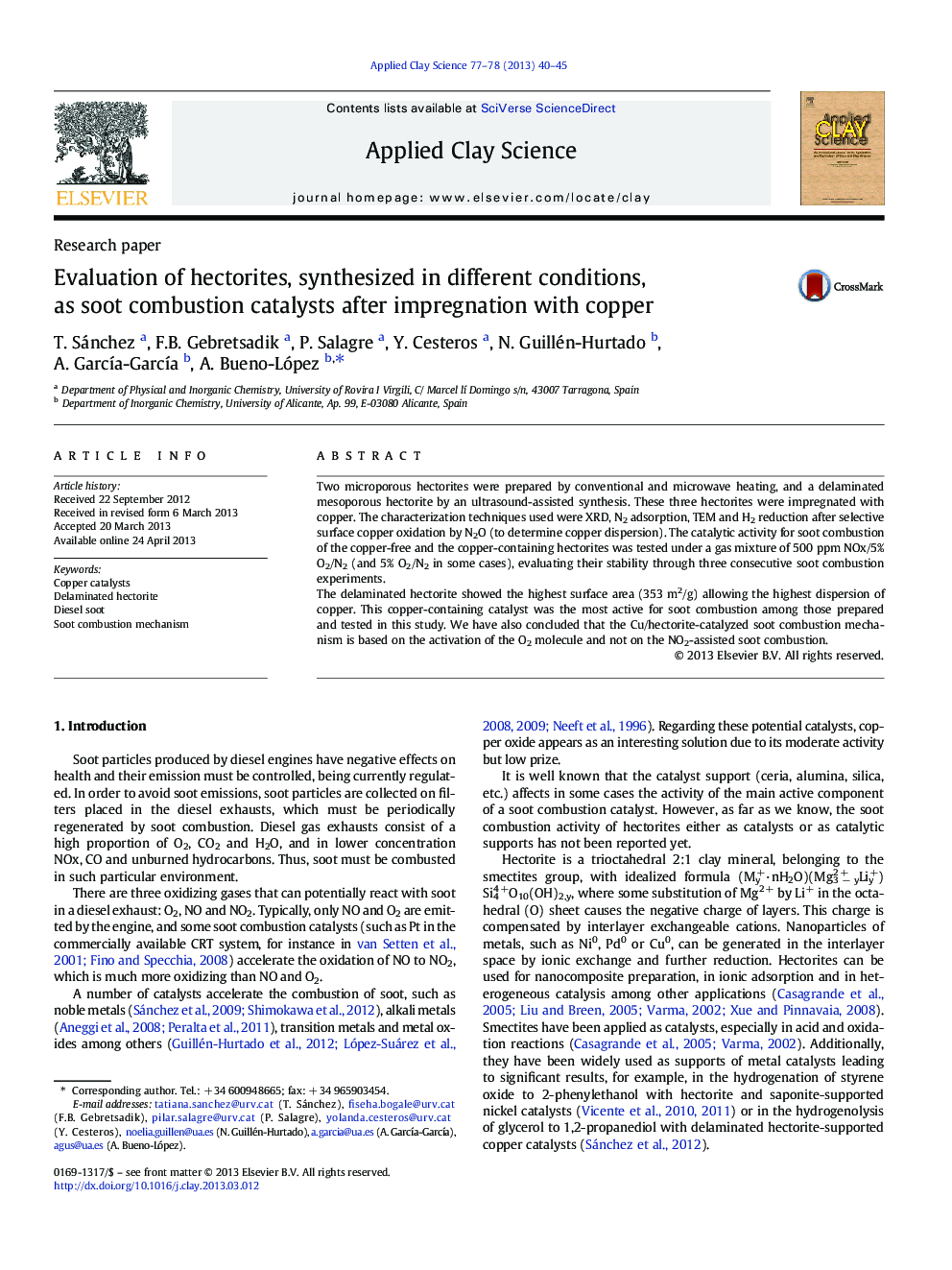| Article ID | Journal | Published Year | Pages | File Type |
|---|---|---|---|---|
| 1695019 | Applied Clay Science | 2013 | 6 Pages |
•Two microporous hectorites and a delaminated mesoporous hectorite were prepared.•Hectorites have been tested for the first time as soot combustion catalysts.•A Cu-containing delaminated mesoporous hectorite was the most active catalysts.
Two microporous hectorites were prepared by conventional and microwave heating, and a delaminated mesoporous hectorite by an ultrasound-assisted synthesis. These three hectorites were impregnated with copper. The characterization techniques used were XRD, N2 adsorption, TEM and H2 reduction after selective surface copper oxidation by N2O (to determine copper dispersion). The catalytic activity for soot combustion of the copper-free and the copper-containing hectorites was tested under a gas mixture of 500 ppm NOx/5% O2/N2 (and 5% O2/N2 in some cases), evaluating their stability through three consecutive soot combustion experiments.The delaminated hectorite showed the highest surface area (353 m2/g) allowing the highest dispersion of copper. This copper-containing catalyst was the most active for soot combustion among those prepared and tested in this study. We have also concluded that the Cu/hectorite-catalyzed soot combustion mechanism is based on the activation of the O2 molecule and not on the NO2-assisted soot combustion.
